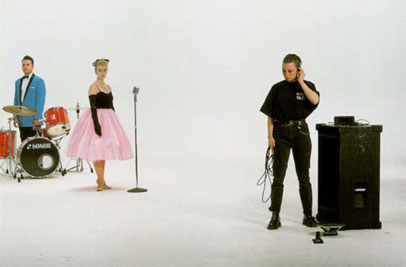Abstract
In the summer of 2003, the Louvre mounted a large exhibition of Leonardo da Vinciís paintings, drawings and manuscripts. Within this exhibition there were several curious objects: four pairs of video editing monitors and a large-screen projection of digital images of The Last Supper. These objects constituted an "intervention" by Irish artist James Coleman. The video monitors displayed drawings from Leonardoís notebooks, which return us to a moment prior to the division of art from science, technology, education, warfare, or even life itself. The projection figured Leonardoís famous, and famously deteriorating, fresco through a constantly shifting series of slow pans across its sumptuous surface, detailed close-ups, and images of the full painting as it resides in the refectory of a Milanese monastery. Software randomly decided what images to show, and how to show them. Coleman's "intervention" ceased to exist the day the exhibition closed. While the Louvre may have expected Coleman to create a work of art that could be added to the museum collection to be preserved for posterity, Coleman, instead, created an "ephemeral memorial" for da Vinci.
In "The Twilight of Posterity," Kaja Silverman argues that Colemanís intervention "transmits" da Vinciís work through a radical reconfiguration of artistic posterity: Coleman ceded pride of place to the images he chose, and his agency to the numerical projection and video monitors; he refused to step into the position of author or symbolic "father;" he built decay and expiration into the work of art even during the tenure of its existence, and protected his images from posthumous entification by making the human psyche the only possible agency of their memorialization. Drawing upon the work of Sigmund Freud, Jacques Lacan, Maurice Merleau-Ponty and the writings ofLeonardo da Vinci, Silverman stages her own intervention into our commonly held notions of artistic legacy, authorship, and immortality, to reimagine the artist not just as a "transmitter" but as a "receiver" of images that hinge upon affective, reversible, potentially transformative correspondences and analogies between objects in the world. Coleman and da Vinciís works are, Silverman writes, ontologically unstable Ė they decay and die, and are reborn, continually generating fresh variants of themselves, and it is analogy that bridges the distance between these forms and allows them to perdure.
Bio
Kaja Silverman is Class of l940 Professor of Rhetoric and Film, and the author of seven books: James Coleman (Hatje Cantz, 2002); World Spectators (Stanford University Press, 2000); Speaking About Godard (New York University Press, l998; with Harun Farocki); The Threshold of the Visual World (Routledge, l996); Male Subjectivity at the Margins (Routledge, 1992); The Acoustic Mirror: The Female Voice in Psychoanalysis and Cinema (Indiana University Press, l988); and The Subject of Semiotics (Oxford University Press, l982).
Her writing and teaching are concentrated at the moment primarily on phenomenology, psychoanalysis, photography, and time-based visual art, but she continues to write about and teach courses on cinema, and has a developing interest in painting. She maintains a continuing commitment to feminist theory, post-structuralist theory, queer studies, masculinity, and theories of "race." She is currently working on two new books, Flesh of My Flesh (which is almost complete), and The Miracle of Analogy.
-- As of 3/12/07
